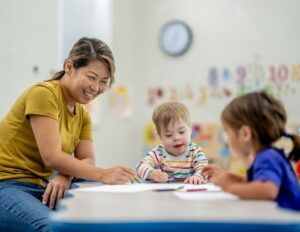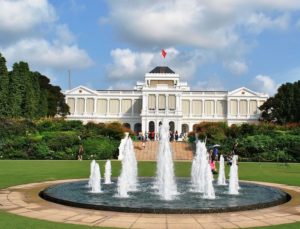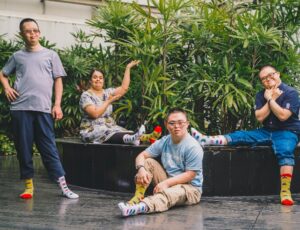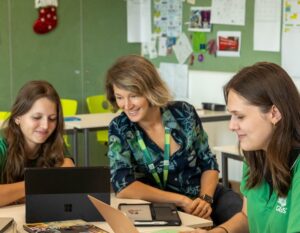

Find out why David Hoss loves teaching at Singapore American School!
Teacher: David Hoss
Teaches: Principal
What is your background and training and what made you want to become a principal?
I have a bachelor of science in education, a Master’s in counselling, and a specialist’s degree in administration. Having worked as a teacher and counsellor for 7 years in Colorado and Wyoming, I became interested in creating learning environments which could challenge and motivate children. I also enjoyed working with and helping teachers develop their skill sets by delivering high-impact teaching strategies enabling children to experience high levels of learning. I joined Singapore American School (SAS) in 1990.
What do you love about working at your school?
I love that SAS is focused on building relationships with students so that each child understands that he or she is well cared for, respected, and supported in their learning. These relationships not only occur with our students, but also among our parents and teachers.
What is a challenge families face when they first arrive at Singapore American School?Because we are one of the largest U.S. international schools in the world with about 1,000 elementary children, families visiting campus may be overwhelmed by its size. In the US, a big elementary school will have 300-500 children. They wonder, “Am I going to get lost?” But parents’ and children’s initial worries are gone quickly when they find that there’s so much support here and people watching out for their kids, making sure they know where to go, and that they’re well taken care of.
Families are excited by all our different opportunities in art, music, PE, and languages, and the number of specialists we have on board for all these. In many schools, the regular classroom teacher may provide these classes. But at SAS, we have dedicated specialists helping children in these different areas.
What is your take on play-based learning?
Play is a vital part of learning and needs to be carefully incorporated into the learning environment. Children develop key areas such as their character, communication, creativity, critical thinking, collaboration, cultural competence, and core knowledge through play. It’s important that children have time to use what they learn in social situations where their learning transfers to real life. Play enables this to happen.
What is your favourite game or activity to do with your students?
I ask teachers to send students to the principal’s office when they have done something really well. Students come in to share their reading, their writing, their math, or how they treated their classmate in a very caring manner. I love getting to speak with students about these things and building that positive relationship about doing things well at Singapore American School.
Every child does good things all the time, and every child should be able to visit the principal’s office because they’ve been doing good work, done something really well, or treated somebody really nicely. The principal’s office is not just a place you visit when you’re having a problem, but also when you’re rewarded for doing good work.
What is one fun fact about you?
In 2010, I was named a National Distinguished Principal by the National Association of Elementary School Principals, and received this award at a formal ceremony in Washington, D.C.
What would you share with families that are looking at SAS and are not from the U.S.?
Singapore American School has children from over 50 countries. Because of this, all our children enjoy a mixed diversity of cultures, personalities, and nationalities, which contributes to their development as true global citizens of the world.We also look at best practices around the world and employ proven teaching methods that have been shown to produce high levels of learning for children.
What are some of the great things you see teachers doing in the classroom?
Building relationships with children. Our teachers, counsellors, and specialists do an amazing job of establishing extraordinary care and personal relationships with each child. That supports high levels of learning for each child by all teachers. When you have that many people looking out for each individual child in a school, it makes the environment special for all our children.






 View All
View All





 View All
View All







 View All
View All




